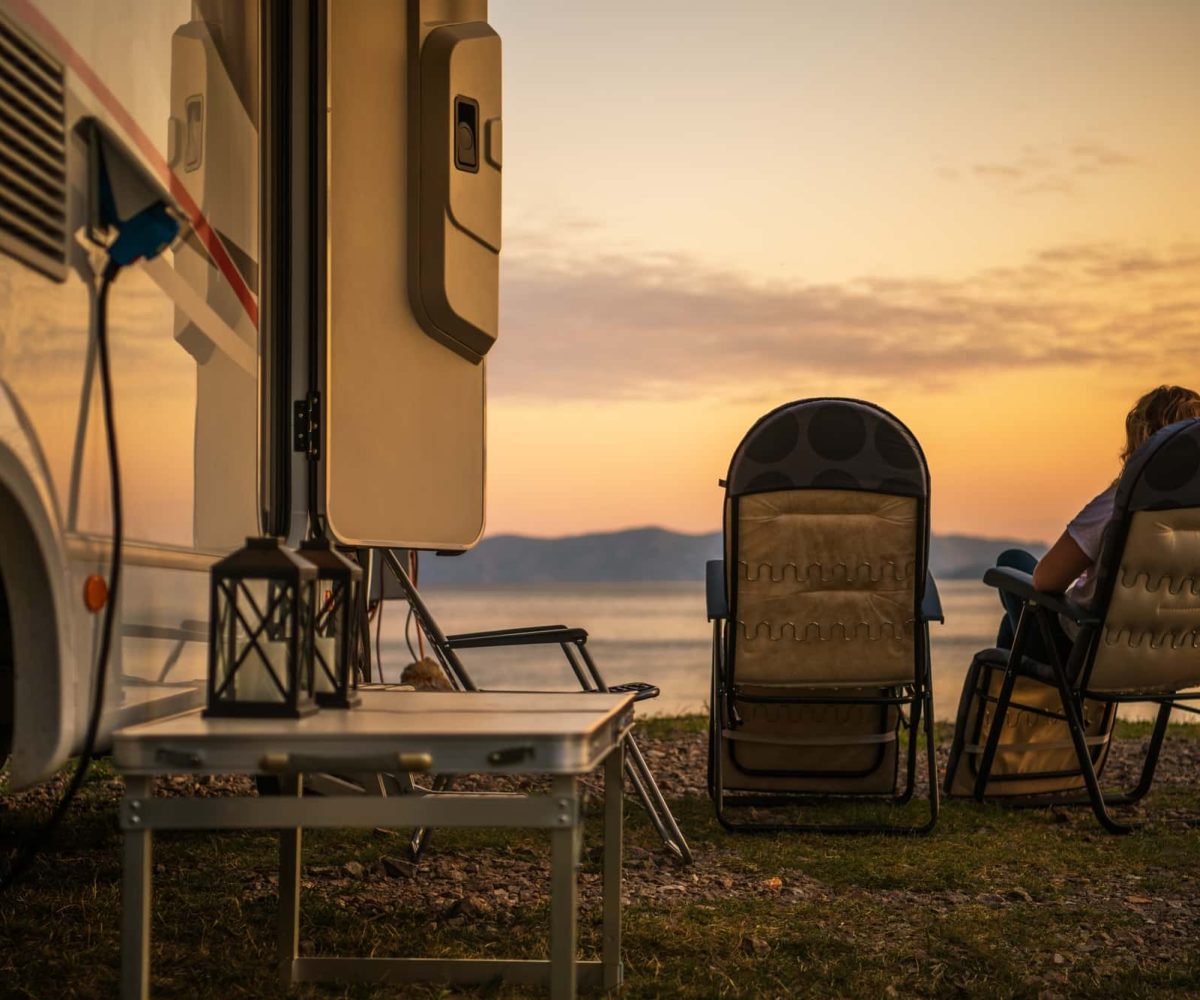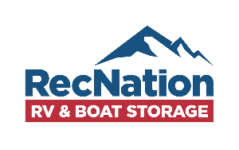14 Tips for RV Traveling and Living During Retirement

Retirement provides more time to enjoy the activities you care about. If one of those activities is travel, RV transportation helps reduce costs as you see the world. RV travel is a great way to explore new places, meet new people, and embrace a sense of adventure.
Despite the benefits, traveling by RV is sometimes a challenge. RV life can make travel and socialization easier, but it can also make budgeting, storage, and communication more difficult. Let’s explore a few tips for retired life in an RV.
Checklists help keep priorities straight. They allow you to easily capture action items like travel dates, itineraries, maintenance tasks, and budget planning. This keeps you organized and prepared, whether you’re stationary or constantly on the go.
Here are a few items you can add to your RV living checklist:
1. Make a Checklist
- Financial priorities like travel expenses, campground fees, and groceries;
- Healthcare priorities like medication and insurance cards;
- Clothing priorities like weatherproof jackets and comfortable walking shoes;
- Cookware priorities like utensils, propane, and food storage containers.
Making a checklist ensures you’re well-prepared for whatever comes next on your RV journey. When it comes time to prepare a meal or pack a bag, your checklist also keeps you from forgetting any important items.
2. Stick to a Budget
When covering expenses like fuel, RV maintenance, and park permits, your budget becomes extremely important. With a limited income, estimating your expenses helps manage money effectively and prevent overspending.
Make sure to account for RV and personal costs. For example, you may need to pay for tolls, overnight parking fees, and new vehicle parts. Personal expenses can include medication, meals, and health insurance premiums.
With a higher income, you might be able to afford more frequent travel and restaurant visits. However, a moderate income can still cover food, fuel, and other essentials as long as you plan ahead. Outline your monthly income and map expenses against what you earn to preserve a buffer between income and expenses.
3. Create an Emergency Fund
An emergency fund is a savings account that helps cover unforeseen circumstances. For example, you might use these funds to cover a flat tire or medical issue. Emergency funds are particularly important for RV residents since your vehicle is both your home and your method of travel.
Creating an emergency fund means saving money you’ll only use in unexpected situations. Consider placing your money in a high-yield savings account, one that generates interest until you withdraw it. Deposit a portion of your monthly income into this fund until you reach three to six months of total income.
4. Research Local Laws
Local laws can influence all sorts of decisions as an RV owner. They might determine where you can park, how long you can stay, or how large your vehicle can be. Some cities also place strict regulations on items like alcohol, firearms, and waste. Understanding these laws allows you to avoid accidental violations and fines.
Traffic laws and vehicle weight limits often change from one place to another. Whether you want to stop in a new location or you’re just passing through, research local laws so that you can respect each community you explore.
5. Get Flexible Health Insurance
Most health insurance plans include a provider network of practitioners that the health insurance company partners with. If you see a provider outside of this network, it’s considered “out-of-network.” Your health insurance plan might not cover some, or any, of the services you receive there.
Use a flexible health insurance plan to avoid these higher costs while traveling in an RV. Flexible plans typically offer coverage across a wide network, allowing you to find healthcare during travel.
6. Consider Taxes When Choosing Your Documented Area of Residence
Declaring a residence is important for vehicle registration, voting, and filing taxes — but it can be a little complicated if you’re a frequent RV traveler. Many states use the 183-day rule when determining your residency. This rule states that if you spend 183 days — more than 50% of the calendar year — in a state, you can legally become a resident there.
Declaring an area of residence is especially important during tax season since tax rates vary widely by state. As long as your travel there is legitimate, you can save money simply by declaring residency in a state with lower taxes. Here are a few steps that help you prove residency:
- Register to vote.
- Transfer or renew your driver’s license.
- Update your mailing address.
- Open new bank accounts in your new home state.
State departments might also consider property you own when determining your residency. Check with your intended state to determine their exact criteria for determining residence.
7. Set up a System for Receiving Your Mail
Receiving regular mail is another challenge that retired RV residents face. Nomadic RV retirees typically have three options for mail pickup while on the go:
- Mail forwarding services: These services redirect your mail from your state of residency to your current location.
- Virtual mailboxes: These services receive physical mail and send you digital scanned copies.
- Traditional delivery: Post offices receive and hold mail for you at a fixed address.
Choose the option that works best for your RV lifestyle. If you rarely travel, general post office delivery might work best for you. But if you move around frequently, consider having your mail forwarded to each new location. This allows you to receive Social Security benefit statements, medical bills, and legal documents wherever you happen to live.
8. Get a Storage Space
Compared to a permanent residence, you won’t have as much space for your possessions in an RV. This is where storage space can help.
Choose a storage provider with enough room for your documents, appliances, and other household items. Many of these facilities are climate-controlled and secure, protecting your possessions until you collect them. You can even use RV storage and boat storage to store vehicles between trips.
9. Use Public Wi-Fi Carefully
Some campsites, rest areas, and restaurants feature public internet. Many of these networks are unsecured, meaning anyone can connect to them. This makes it easier for hackers to access information like passwords and bank information. Cybercriminals can also use public internet to spread malware, which is malicious software made to corrupt your device.
Use a protected internet connection whenever possible to avoid these threats. For example, visit a library with an encrypted network, rather than a rest stop, to access emails. You can also use firewalls and virtual private networks (VPNs) to protect your browsing sessions from hackers.
10. Update and Organize Important Documents
Make time at least once a month to review your estate plan, financial statements, and other important documents. This keeps you up-to-date on expenses and gives you the chance to update any preferences.
It’s particularly important to update your living will. This document should provide clear plans for your assets and beneficiaries in the event that you pass away. Make sure you also update your healthcare proxy through your residency state’s durable power of attorney for healthcare form. This appoints someone to make health care decisions on your behalf if you cannot.
11. Prepare Emergency Supplies
Seasoned travelers know to expect the unexpected while traveling. This means having supplies on hand to deal with road emergencies.
Here are some emergency supplies to keep in your RV:
- First aid kit with bandages, gauze, and basic medical supplies like tweezers.
- Flashlights and batteries for any power outages.
- Non-perishable food items like canned fruits and granola bars.
- Bottled water.
- Maintenance tools like a wrench, screwdriver set, duct tape, and rope.
- Emergency communication devices like a satellite phone and radio.
You should also pack warm clothing, sleeping bags, and blankets. These materials will help you stay warm in the event of an emergency or an unexpected power outage.
12. Share Your Location With a Trusted Friend or Family Member
Make sure someone is familiar with your travel plans before you leave. Even if you’re traveling with others, sharing your location can save your life in the event of an emergency.
There are several mobile apps you can use to easily share your location with others. These include the iOS app Find My, which allows you to locate a device using its last network connection. Google Maps also allows you to share your real-time location with friends while navigating.
13. Stay Flexible
Part of the fun of an RV trip is planning out your itinerary. However, it’s also important to stay flexible when plans change. This same flexibility also allows you to make the most of new challenges and opportunities you might come across.
Rather than scheduling every hour of every day, try identifying the locations and attractions you want to experience. Take your time exploring new places at a pace known as “slow travel.” You can spend more or less time in each place, whether it’s because of weather or personal preference.
14. Keep Your Interests in Mind
Before departing, identify destinations of particular interest to you. Find appealing restaurants, attractions, and experiences that introduce new cultures.
If you’re spending hours a day in an RV, consider destinations that challenge your mind and body. For example, you might visit a local history museum or hike through a national park. Participate in food tours or community workshops that introduce new perspectives. Stop and birdwatch for a leisurely activity, one that captures the slow pace of living you’re looking for in RV retirement life.
